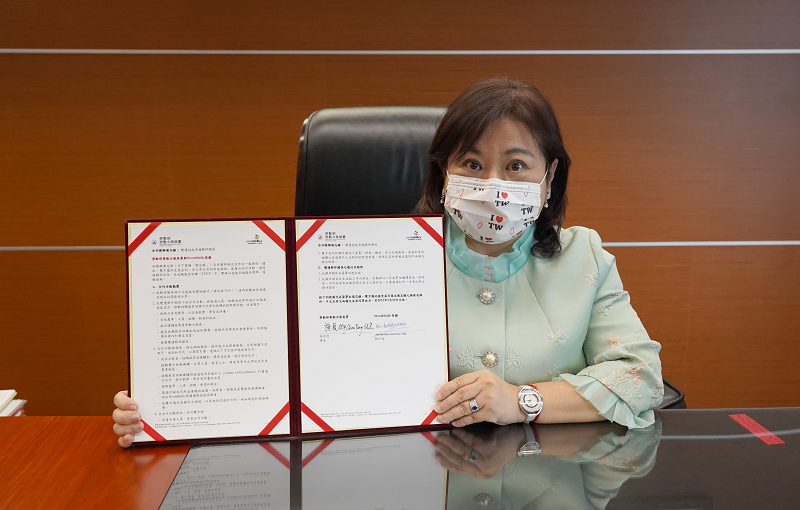作者/ Alan Smithers
編譯/ 吳姵瑱、余欣融
[tabs]
[tab title=”中文”]
學徒制是英國技術斷層的救星?首相卡麥隆:未來五年增三百萬學徒機會
英國現任首相大衛・卡麥隆(David Cameron)競選期間曾承諾,接下來的五年要再創造超過三百萬個學徒機會,平均一年增加約六十萬個名額。上一學年(2013-2014)全國各年齡層參與學徒制總人數為四十四萬,此舉證明英國將學徒制視為拯救技術斷層的良藥。
目前16-18歲的青少年只有約5%的人投入學徒制,選擇高等教育的則近50%。學徒制被視為是給功課不好、只能從事勞動工作的人做。然而許多雇主表示,申請學徒制的人資質良莠不齊,他們也不願聘用。
前英國首相約翰・梅傑(John Major)於執政期間(1990-1997)推行新學徒制改善青年失業率。新制雖保有實習之名,卻無實習之實。以職業資格證書(National Vocational Qualifications, 簡稱NVQs)(註1)為例,能力取代訓練成為認證的重點。沒有特定的預備課程,也沒有強制修業年限。不論技能如何習得,一旦能力經過審核確認,學員便能取得證書。比起應屆畢業生,這樣的制度對在職人士較有吸引力。
為了補足學徒制無實習之實,第一屆卡麥隆內閣(2010-2015年5月)規定坊間培訓機構得提供內容充實、為期至少12個月,加入工作時間外的訓練,才能得到經費補助和認可。這樣的做法短時間內無法提升參與人數,但其嚴謹和困難度才有可能提高技能資格證書的價值。第二屆卡麥隆內閣(2015年5月-現在)以產業做區隔,邀請雇主一同設立新的認證標準,涵蓋了74個行業和列出多達1500項的專業技能項目。然而政府也坦言某些技能項目只是針對淘汰率高的工作,它們過於特定,不是可轉移技能。
按照現行制度,職業資格證書是由各別獨立的培訓機構審核並核發,而傳統學位型課程則是提供整體資格認證。雖然這樣的做法(培訓機構各自審核及核發證書)提供較大的彈性,但缺點是缺乏整體性。

大衛・卡麥隆參訪位於白金漢郡米爾頓凱恩斯鎮(Milton Keynes)的賓士學院
現行技職體制也存在著一些問題,例如該如何將數學和英文併入技職課程。在新學徒制下,學生必須在普通中等教育課程(General Certificate of Secondary Education,以下簡稱GCSE)或其他同等學歷的英文和數學課程中,取得至少C的成績,無法達成的學生只能不斷地重修這些科目,而新版的GCSEs肯定會讓證書取得難上加難。由於不如GCSEs具有公信力,功能性學科證書(Functional Skills qualification)(註2)無法成為替代方案。
GCSEs 和功能性學科證書的共同缺點是過於一般化,缺乏專業性。拿德國教育體制來說,數學和語言課程是由專精各行業的老師根據實際需求授課,所以受訓的學生或許在學術科目表現不理想,但得熟稔自己專攻領域會用到的數學和語言能力才能取得證書。我認為採用德國的做法將帶領英國學徒制前進一大步:轉型成客製化的整合訓練課程以吸引更多年輕人投入職業訓練。今天若是以學位的方式授予證書和頭銜肯定會讓學徒制更加熱門搶手。
考試規範處(Office of Qualifications and Examinations Regulation,簡稱Ofqual) 對於目前坊間各式各樣五花八門的職業資格證書尚未有實際規範的方法。如果由政府統一管理規範資格證書或許能幫助學徒制重拾其應有的社會價值和地位。證書的核發數量不應該太多,才能以GCSEs同等規格審核。職業資格證書才能「確實」地帶給求職者加分效果並同時有效率地幫助雇主媒合所需人才,因為他們可以省下審核一大堆資格證書的時間。
除了具公信力的職業資格證書,學校也應不遺餘力的推廣技職訓練。對現在的學生而言,學徒制成了GCSE考不好的唯一出路,唯一在10和11年級(Key Stage 4)加入技職體驗的課程(Young Apprentice Programme)也因為經費的關係於2010年停辦。現行的學徒制並不適合14-16歲的學生,但對於滿16歲的學生則提供了另一個機會和選擇。然而,成效不彰的職涯諮商讓原本就處於劣勢的技職路線更加不明確。
目前政府仰賴獎金方案擴張投入學徒制的人數和學徒機會。但若是要提供應屆畢業生最實際的技職課程,達成當初承諾大眾的三百萬個學徒機會,政府須確定訓練內容符合產業需求、吸引優質學員,打造明確且具公信力的的管道,才能幫助學生「真正」校園職場無縫接軌。
註1:職業資格證書 (National Vocational Qualifications, 簡稱NVQs):學徒達成某領域如水電工、理髮師所需的專業工作技能標準可獲得資格證書
註2:功能性學科證書(Functional Skills qualification):學生達成基本英數要求可獲得學科證書
【作者介紹:Alan Smithers】
英國白金漢大學產學合作發展中心所長
[/tab]
[tab title=”English”]
National apprenticeship qualifications could attract a new generation of trainees
Apprenticeships are the big hope for rescuing Britain’s skills base. During the election campaign, David Cameron promised three million extra places. This pledge is a massive increase on the total of 440,000 people, from all age groups, starting an apprenticeship in 2013-14.
Sixteen to 18-year-olds account for only about a quarter of those embarking on apprenticeships. Take-up among this age group is flat-lining at about five per cent, compared with the nearly 50 per cent going on to higher education. They tend to perceive apprenticeships as being about manual jobs for those who have not done well at school. But employers complain that too many apprenticeship applicants are just not good enough, and the evidence is that they are not recruiting from the lowest attainment quartile.
The Government is seriously in need of a game changer. Something for it to consider is national apprenticeship qualifications. When John Major’s government brought in “modern apprenticeships”, partly to ease youth unemployment, it applied a name evoking a cherished reputation for high-quality training to something quite different. In their new form, apprenticeships became the containers for collections of various vocational qualifications. Among them were the National Vocational Qualifications (NVQs), which deliberately moved the focus from training to competence. They did not set out programmes of preparation or periods of training time, but instead ticked off what trainees could do, irrespective of how they had learned to do it. As such, it is not surprising that apprenticeships as they have been reinvented should have more appeal to people already in work than school-leavers.
The Coalition tried to strengthen apprenticeships by requiring them to involve “substantial and sustained training lasting a minimum of 12 months and including off-the-job training”, in order to receive funding and recognition. This condition seems to have slowed growth in the short-term, but it was hoped that the greater stringency would enhance the status.
The Government invited employers to work together in sector-based groups (as “trailblazers”) to set new standards. A total of 74 groups have been formed and the specifications being set are proliferating at a rapid rate, with 1,500 or more in prospect. But ministerial concern has been expressed that they may be too specific, not really transferable, and, in some cases, directed at jobs with a short shelf life.
But is the new Government doing enough? Under the present plans, apprenticeships will continue to be collections of standalone qualifications. Unlike in degree programmes, where there is an overall qualification, in apprenticeships it is the individual parts that lead to awards. This has the considerable merit of flexibility, but it also means that they are fragmented.
The model poses a number of problems. Take, for example, how to incorporate maths and English. Under the new standards, the requirement is for at least a grade C in both the GCSE or equivalent. The Government favours achieving this through the resitting of GCSEs themselves. This leaves trainees who have struggled with these subjects facing the prospect of having to take them again and again to complete their apprenticeships. The new, beefed-up GCSEs will put these qualifications even further out of reach. There has been a Functional Skills qualification as an alternative, but the Government is discouraging its use since it believes it lacks the currency of GCSEs.
The trouble with both the GCSEs and the Functional Skills qualification is that they are general in intention. In the admired German system, maths and languages are taught in relation to the occupational field. Apprentice plumbers, for example, are taught maths that will be meaningful for them – by teachers specialising in teaching maths to plumbers. The trainees usually become very proficient in the branches they have to master in order to qualify, even though they may have a poor record in the academic subject.
A bold step for this country would be to follow suit. This approach, however, depends on the apprenticeship being a tailored, integrated training programme. National qualifications would drive apprenticeships in this direction, since programmes would have to be laid down to meet the specifications of the awards.
A distinctive qualification for apprenticeships would almost certainly make them more attractive. At present, many trainees are taking some form of vocational training outside of apprenticeships. Many of these would be likely to be drawn in by a distinctive award. Conceivably, it could be made even more appealing by, in the manner of degrees, bringing an entitlement to put letters after the name.

David Cameron visits Mercedes-Benz’s apprentice academy in Milton Keynes (Getty)
National apprenticeship qualifications would also be something that successful candidates could show to potential employers. Life would be easier for employers, too, because in recruiting, they would not have to wade through assemblages of vocational and other qualifications. Distinctive awards would also give apprenticeships a clear identity and provide a focus for careers advisers. There is already an apprenticeship certification system (administered by the Federation of Industry Sector Skills & Standards). But this is little known and is only an adjunct to the separate qualifications.
Integrated apprenticeships would translate the standards set by the employer “trailblazers” into actual training programmes. This would be a check on the proliferation of standards and ensure that they were renewed regularly. The number of apprenticeship qualifications would be relatively small, so that it would be feasible for the Office of Qualifications and Examinations Regulation (Ofqual) to put them under the same scrutiny as GCSEs and A-levels.
The vast array of vocational qualifications has so far left Ofqual puzzling over how to accredit them. The issue of what the qualification in maths and English should be would be resolved because they could be seamlessly fitted into the training programme and qualification.
National apprenticeship qualifications would also enable the Government to claim the brand. It does not own the apprenticeship brand and as a qualification it is easily confused, in the eyes of the public, with the lesser offerings that are out there. Consequently, its efforts to raise the status of apprenticeships have been severely hampered. But the Government would have ownership of the national apprenticeship qualifications so that the approved programmes would bear its imprimatur.
However, national apprenticeship qualifications would not be enough to catalyse the major expansion that the Government envisages. Another necessary reform would be to provide clear routes into apprenticeships from school. At present, the major impetus seems to come from not doing very well in GCSE exams. There was once a Young Apprenticeship Programme incorporating work experience at Key Stage 4, but it was ended in 2010 – mainly on the grounds of cost.
The present Traineeship scheme is not for 14 to 16-year-olds, but is a second chance, post-16, for those who did not match up to the requirements the first time. The lack of clear routes into apprenticeships is exacerbated by feeble careers advice.
The Government is counting on financial incentives to boost the number of apprenticeships offered and taken up. But to have any hope of getting anywhere near three million, especially of providing the necessary training for school-leavers, it will have to ensure that they genuinely meet employer needs and attract many more able applicants, and that there are recognisable ladders from school to work. Could national apprenticeship qualifications be the key?
【Author:Alan Smithers】
Professor Alan Smithers is the director of the Centre for Education and Employment Research at the University of Buckingham
[/tab]
[/tabs]
圖片來源:《The Independent》
原文刊登於《The Independent》,經作者Alan Smithers授權編譯,未經許可不得轉載



